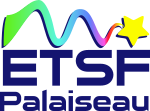| Author | |
|---|---|
| Keywords | |
| Abstract |
The one-body reduced density matrix (1-RDM) of a many-body system at zero temperature gives direct access to many observables, such as the charge density, kinetic energy and occupation numbers. It would be desirable to express it as a simple functional of the density or of other local observables, but to date satisfactory approximations have not yet been found. Deep learning is the state of the art approach to performing high dimensional regressions and classification tasks, and is becoming widely used in the condensed matter community to develop increasingly accurate density functionals. Autoencoders are deep learning models that perform efficient dimensionality reduction, allowing the distillation of data to the fundamental features needed to represent it. By training autoencoders on a large data-set of 1-RDMs from exactly solvable real-space model systems, and performing principal component analysis, the machine learns to what extent the data can be compressed and hence how it is constrained. We gain insight into these machine learned constraints and employ them to inform approximations to the 1-RDM as a functional of the charge density. We exploit known physical properties of the 1-RDM in the simplest possible cases to perform feature engineering, where we inform the structure of the models from known mathematical relations, allowing us to integrate existing understanding into the machine learning methods. By comparing various deep learning approaches we gain insight into what physical features of the density matrix are most amenable to machine learning, utilising both known and learned characteristics. |
| Year of Publication |
2020
|
| Journal |
Faraday Discuss.
|
| Volume |
224
|
| Number of Pages |
265
|
| URL |
http://dx.doi.org/10.1039/D0FD00061B
|
| DOI |
10.1039/D0FD00061B
|
| Download citation |
Insights into one-body density matrices using deep learning
Developed & Designed by Alaa Haddad. Customized by ETSF Palaiseau © 2025.
